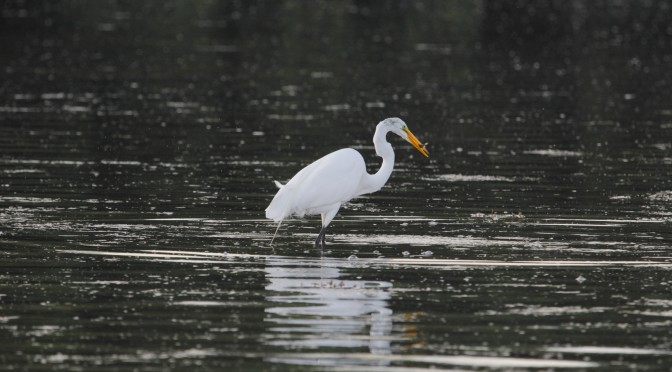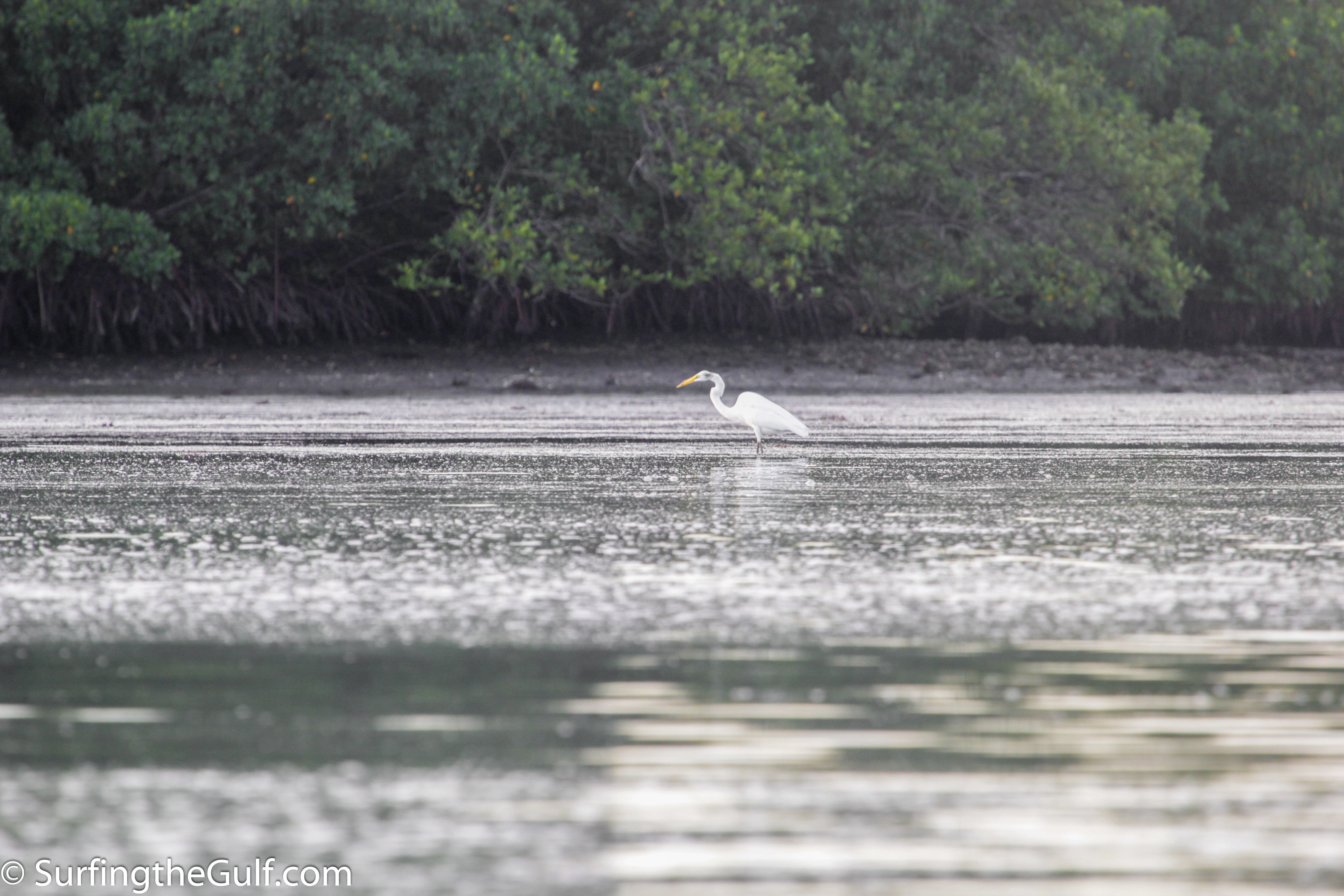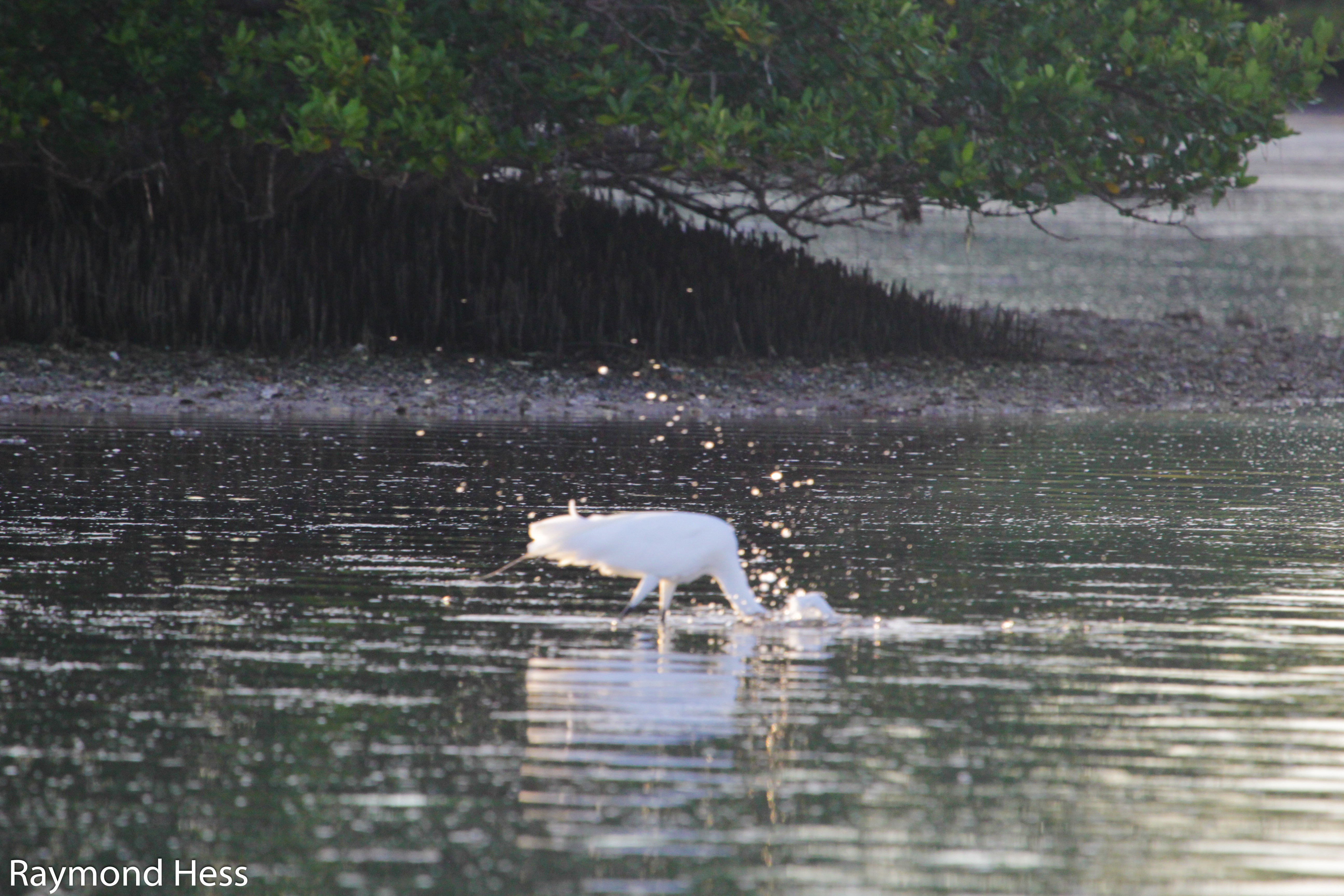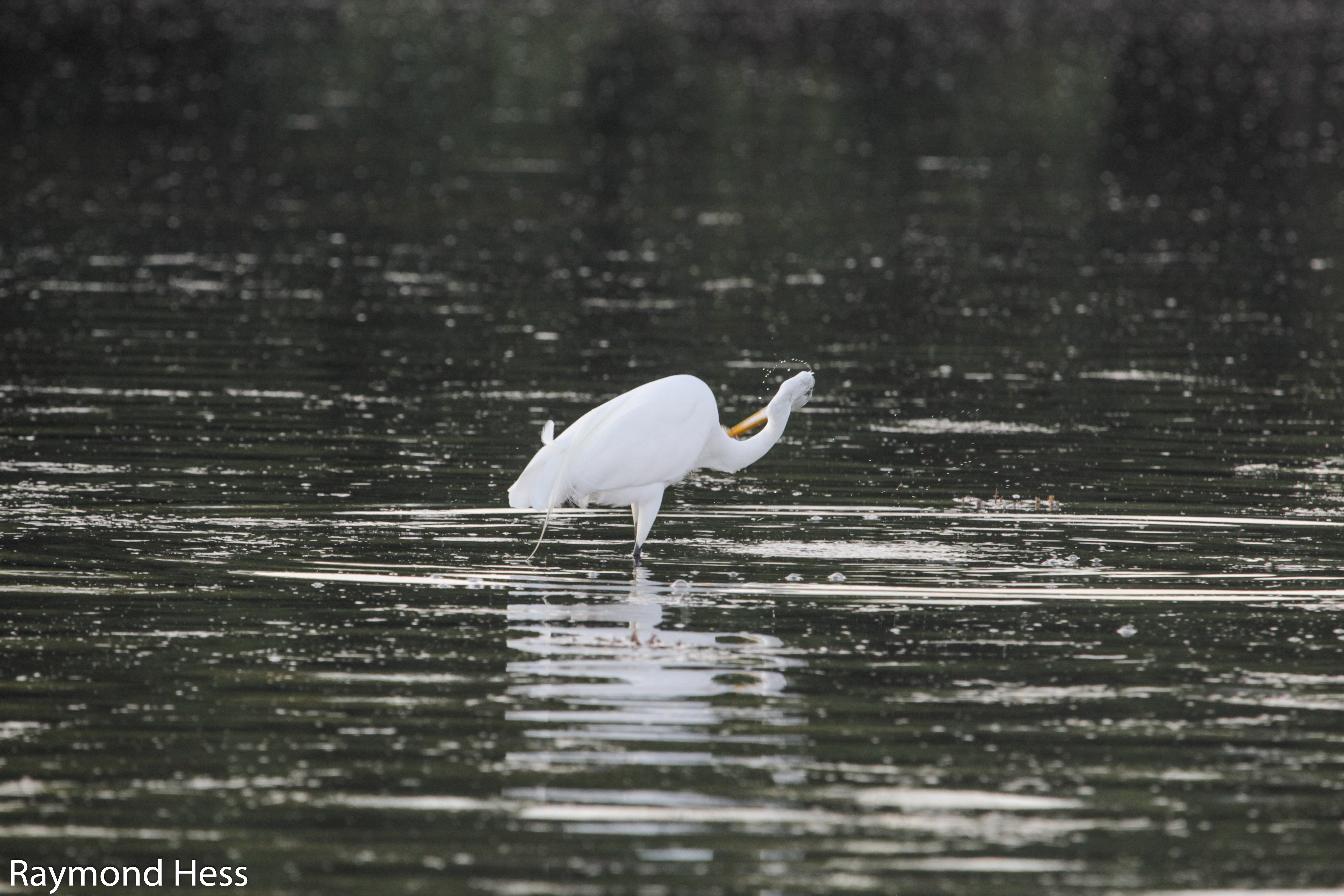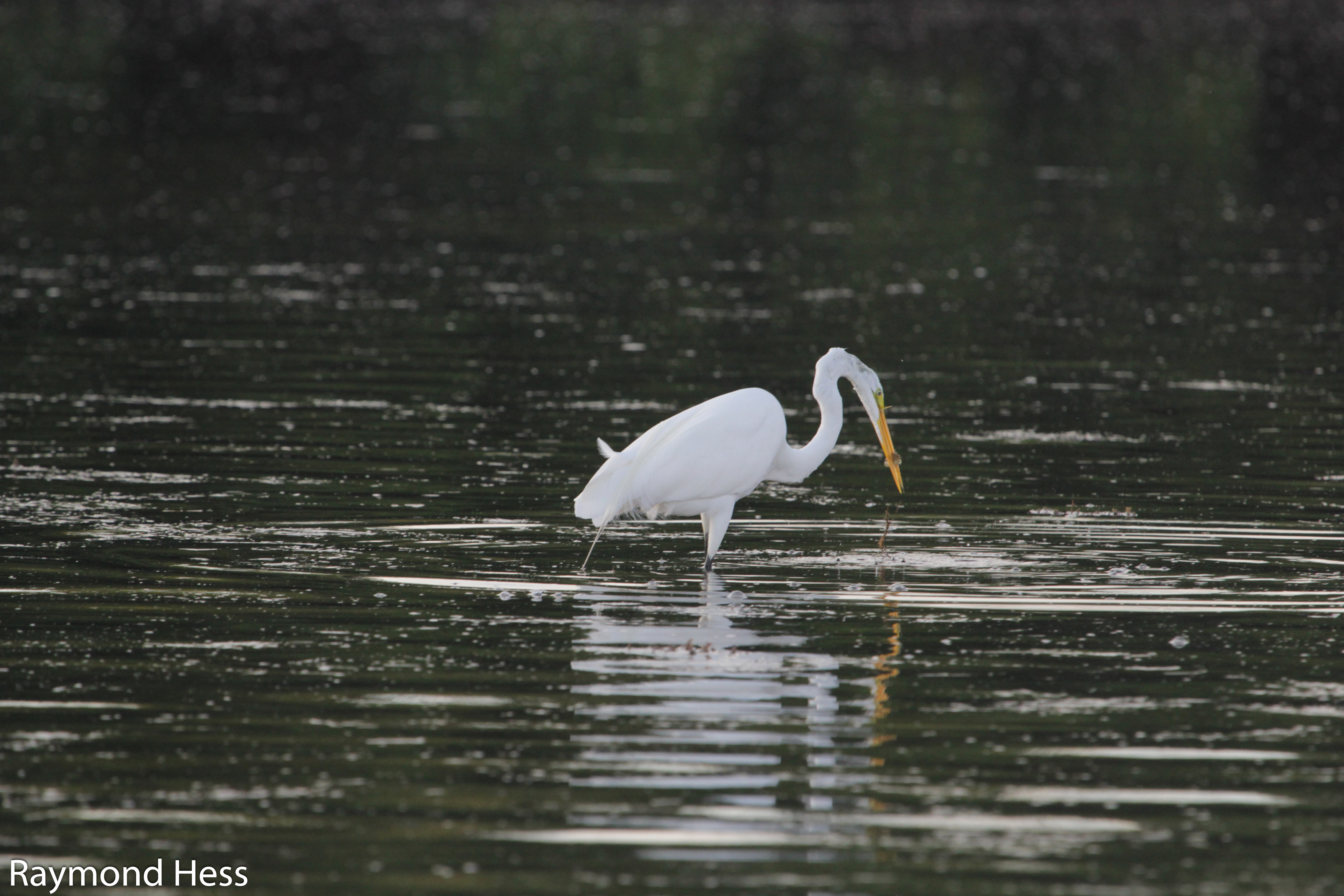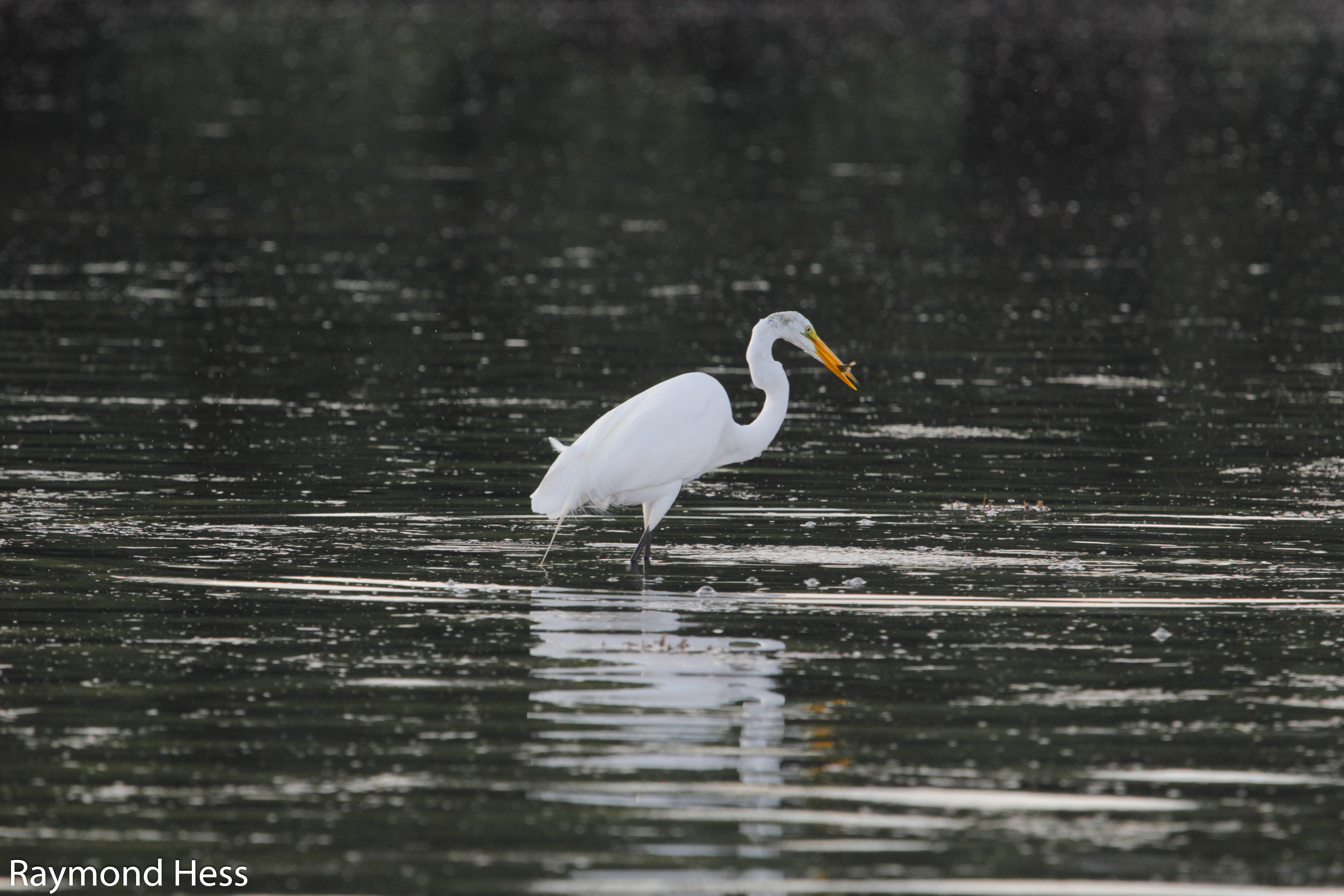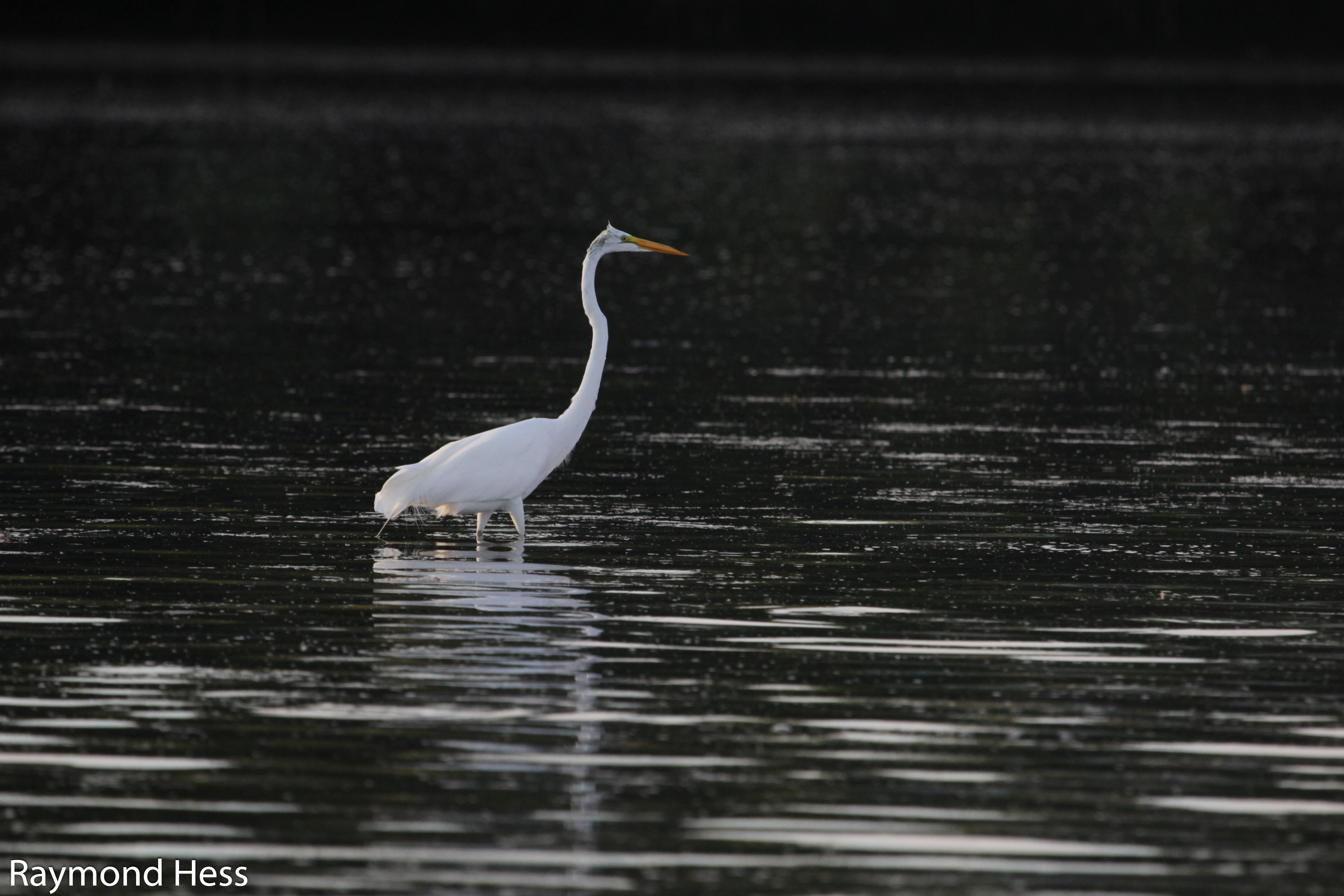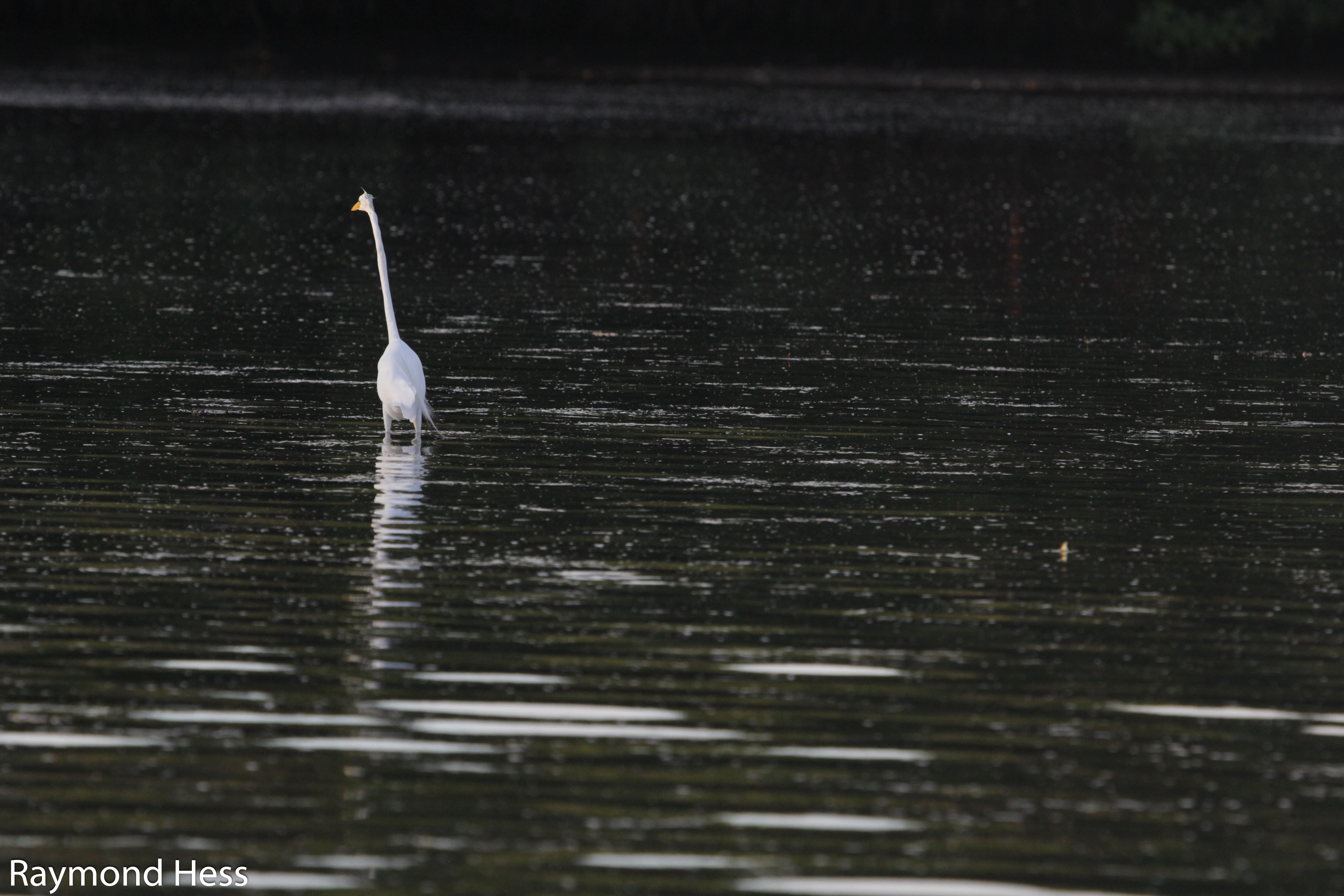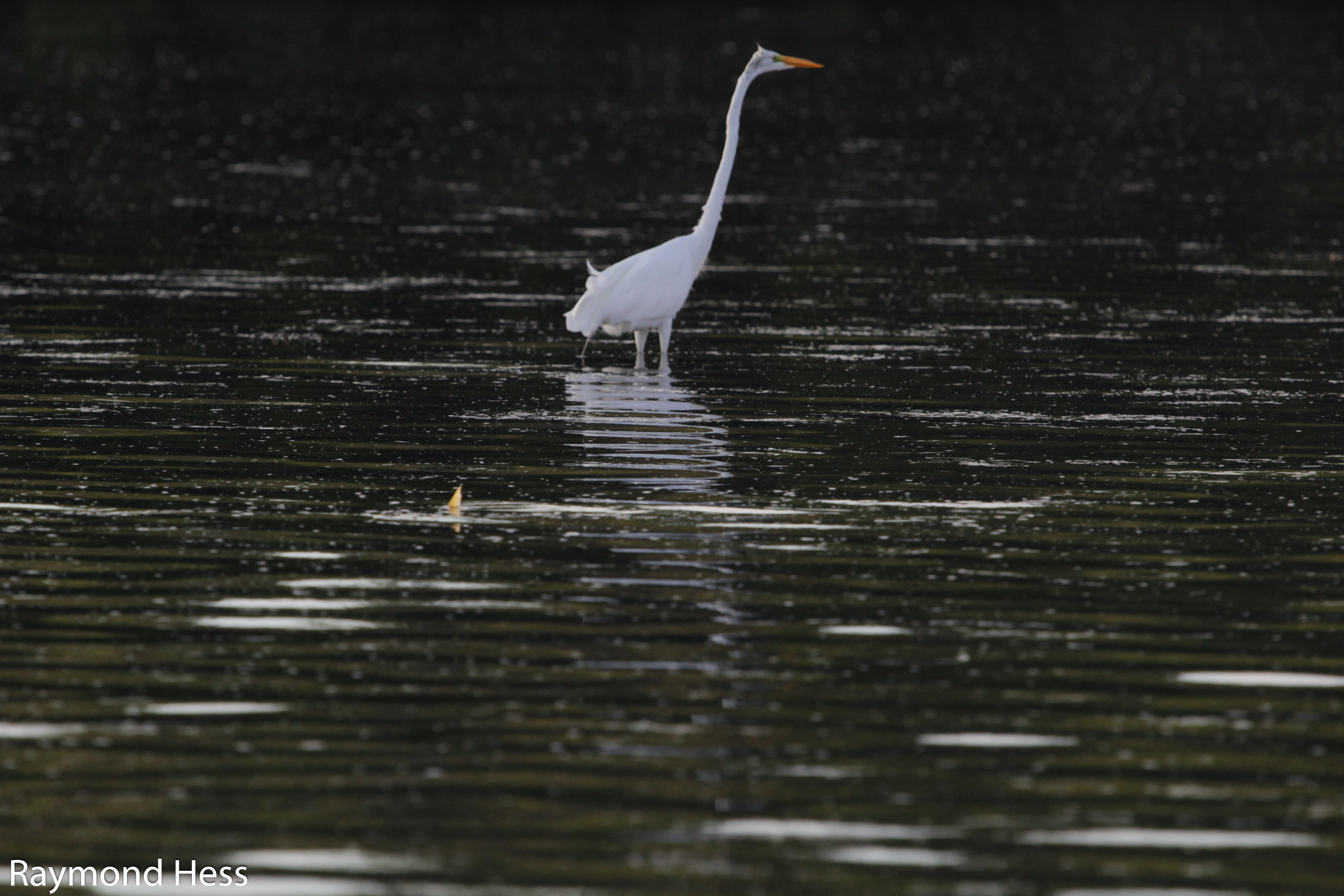Late in the evening just an hour or so before the sun set, the tide drew off the shallow grass flat lining the intracoastal waterway. The grass flat, only inches deep, became the feeding grounds for a variety of species of wading birds, patiently and deliberately stalking the shallow pools of water. As the Common Egret moved across the shallow pool of water, moving its feet through the grassy patches along the bottom, bait fish hiding in the patches of grass swam out from under the bird to avoid capture. As the bait fish swam in and out of the grassy patches the egret watched for a slow moving fish, one that could be easily captured for a tasty treat. It paused for just a second as it saw it’s slow moving target. The bird began to waggle its head back and fourth in a predatory ambush movement. Seeing the small baitfish swimming through a larger opening between the grass patches, the bird strikes. The precision and accuracy of the egrets powerful neck muscles propel its narrow head and sharp beak towards the small fish swimming through the water.
While the common egret moved through the shallow, low tide grass flats a redfish was also stalking prey. The redfish swam in between and through the patches of grass along the bottom searching for crustaceans like small crabs and shrimp. The redfish swam along the bottom searching for prey. As it moved up to a grassy patch with the potential to have a meal hiding within, the redfish shifted its body weight so that its head could be down towards the bottom of the grassy patch. It used its snout to search between the blades of seagrass, always prepared to quickly inhale whatever it came across. While the fish searched with it’s snout, the fish’s golden tail was up in the air, the dramatic evening sunlight reflecting off the water coating its tail. The tail shifted up and down on the surface as it moved through thicker or thinner grass, or as it detected prey on the bottom. When the fish forage on shallow grass flats it’s known to fisherman as a tailing redfish. This is a special and unique sight, something to be appreciated.
Note: On second glance, the fish looks like a mullet foraging.
The wide variety of predatory species feed in similar manners and on similar fish. You can often see a wide variety of birds and fish all feeding in the same area. You may see 10 or 20 different types of birds feeding all the same way in a small body of water. Similarly, when baitfish are schooling in an area you will find a number of larger fish species swimming through that body of water feeding on those baitfish. Species are often found congregating in the same area, and have an interesting knack for finding the food they need to survive.
